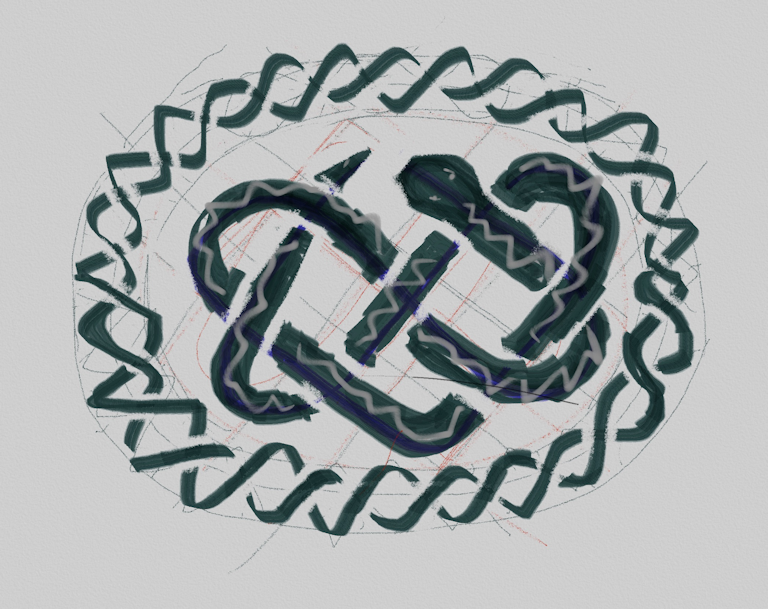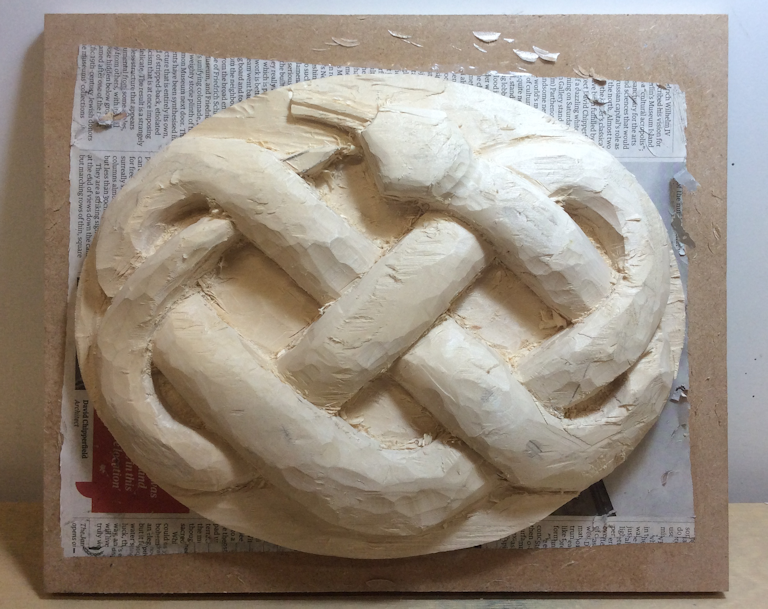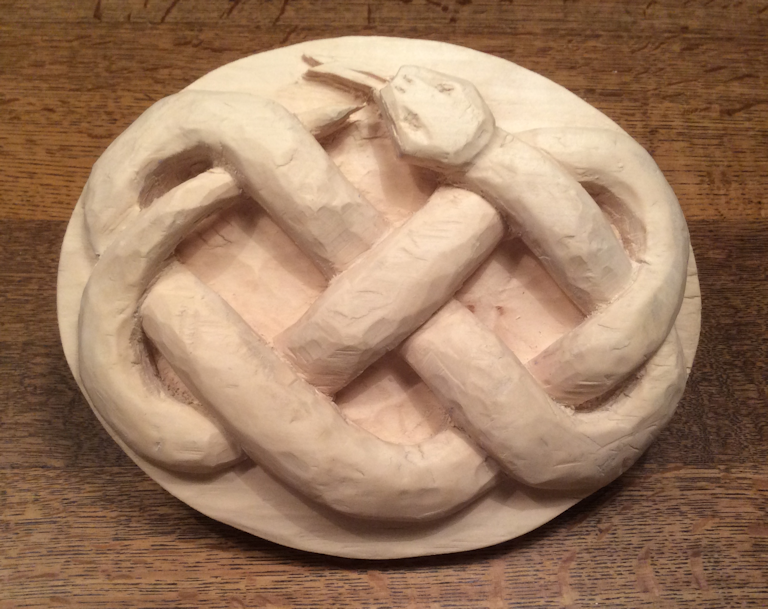Domestic 3D printing is an additive process. A gift allowed me to experience a subtractive one: Alex Jones’ short course Woodcarving for beginners at West Dean College.
The blank
The blank was a oval of lime wood, about 25 cm by 20 cm, and 3 cm to 4 cm high. Lime has a fine and even grain and a density when dry of about 535 kg/m³ (similar to that of Scots pine). It is like balsa wood, but with a greater sense of purpose. Alex also gave us the opportunity to experience small samples of pine, mahogany and oak. In comparison with the hard woods, the lime was like carving cheese. You could push a sharp chisel through it without resorting to a wooden mallet.
The blank was mounted on a MDF base, with a laminate of newspaper and wood glue between the blank and the base. The base could be clamped to a bench during carving and the laminate allowed it to be separated from the blank with a wide chisel, once the carving was complete.
The reference
The suggested reference was a small natural form (for example, a leaf, snail shell or flower). I considered a toadstool or a lady bird, but my interests are more mathematical. A nautilus shell (logarithmic spiral growth) seemed too simple. I settled on a snake, an adder, following a simple Celtic knot. To prepare, I made a finger painting on an iPad:

The idea of a border design for the oval and a patterned snake skin were soon abandoned, as too complex in the available time of a couple of days.
The carving
A wide selection of pfeil Swiss-made chisels were available. By the end of the first day, wood had been gouged away to reveal the basic shape – and some smoothing and rounding of the upper surface had taken place.

On the second day, the shape of the snake was undercut, the base of the blank further cut away and the head and tongue refined. Undercutting the snake lifted it further from the base. Finally, a light sanding muted some of the worst of the imperfections – the result of the lime’s grain running in an awkward direction and my weak backhand – and a coat of shellac sealed the wood.
Celtic snake
The completed carving was true to what I had imagined when the course began:
